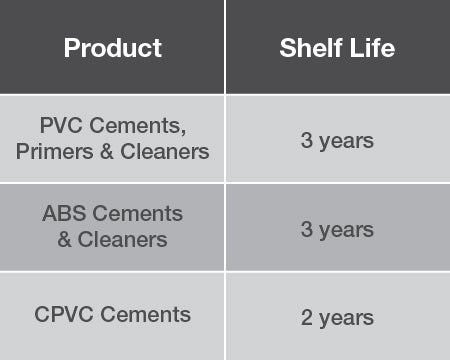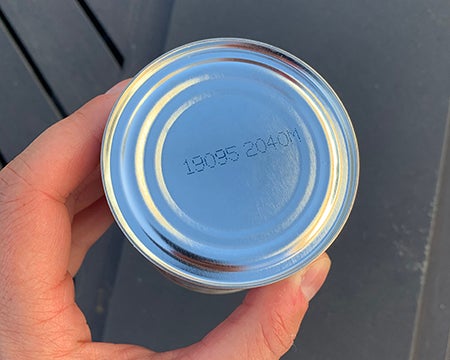Like many products, Oatey cements, primers, and cleaners have expiration dates that indicate the period during which they will perform at their best. These dates indicate the time that has passed since the product was manufactured and packaged.
Once opened, various factors can affect the longevity of Oatey products. However, there are steps you can take to help maintain and extend their shelf life.
Understanding how shelf life works can save you time, money, and effort in plumbing projects. By using and maintaining the freshest products, you can:
- Identify which products are nearing expiration and should be used first.
- Minimize waste from leftover, expired products.
- Ensure optimal performance from your products.
Understanding Shelf Life
Shelf life is based on how long a product will remain usable while it sits unopened on a shelf. That life span starts from the moment the can is sealed in the factory. Once the can is opened, the longevity becomes unpredictable due to various factors, making it difficult to determine an exact timeframe.
So, if a product has a three-year shelf-life, the countdown begins on its manufacture date. The chart below lists the shelf life of several common plumbing products.
PVC cements, primers, and cleaners generally have a shelf life of three years, as do ABS cements and cleaners. However, CPVC cements have a shorter shelf life of two years.
It’s crucial to use these products before their expiration date to ensure they deliver the best performance on plumbing projects. By following the recommended storage and usage guidelines, you can help extend the shelf life of everyday plumbing products and maximize their performance.

How to Read a Cement Date Code

The date is written in Julian format, which combines the year and the day of the year into a single value. In this example, the first group of five digits is the manufacturing date: 19095. To decode this, we separate the number into two parts: the first two digits indicate the year, and the last three digits denote the day of the year.
In this case, the first two digits, 19, represent the year. Given that this code pertains to 2019, we can infer that the manufacturing date is within that year. The last three digits, 095, signify the day of the year. Counting from January 1st, 095 corresponds to April 5th.
Therefore, the date of manufacture is April 5th, 2019.

Factors Affecting Shelf Life
Several factors can reduce the shelf life of plumbing products, including:
- Temperature Exposure: Store cements, primers, and cleaners in a dry area with temperatures between 40 and 110 degrees Fahrenheit. Exposure to temperatures outside this range can alter the product’s chemistry, diminishing its effectiveness.
- Opening and Reopening the Product: The product’s shelf life is immediately shortened when the manufacturer's seal is broken. Each subsequent opening further decreases its longevity due to solvent evaporation.
- Improper Closure: After using a product, ensure the container is fully sealed to prevent evaporation. Excessive pressure on the lid, such as using adjustable pliers like Channellocks with too much pressure, may bend the lid, making an airtight seal unattainable.
To ensure the longevity of your cements, primers, and cleaners, follow safe storage guidelines (detailed on product labels) closely and use the correct methods for opening and closing these containers.
Opening a New Container: Use a pair of adjustable pliers to open a new container. Handle the pliers with care, applying just enough pressure to avoid bending or distorting the lid. Turn the lid counterclockwise until it can be easily removed.
Closing the Container: To close the container, first hand-tighten the lid. Then, use the adjustable pliers to secure it to a fully closed position. Take care not to apply excessive pressure or overtighten. The goal is to create an airtight seal without compromising the container's integrity.
Oatey Tip: Store your cement upside down to create a better seal and slow evaporation. This can extend the product’s shelf life after opening.
By adhering to these guidelines and always keeping containers sealed when not in use, you can keep your products fresh and extend their usability.